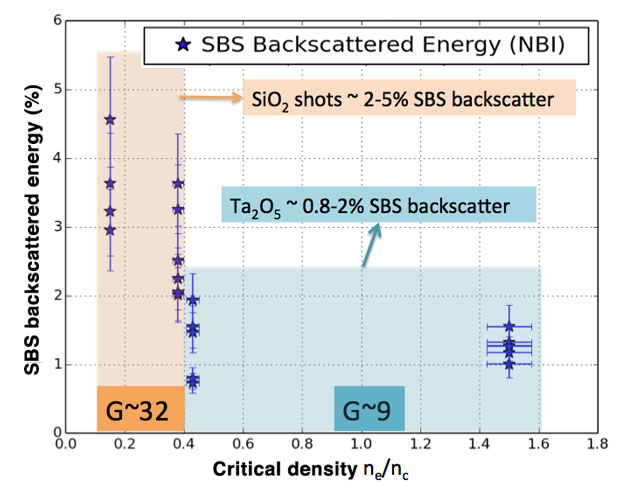Ogden Jones (15-ERD-058)
Project Description
Both high-energy-density physics and Inertial Confinement Fusion experiments would greatly benefit from a laser-driven target capsule (hohlraum) that consistently provides an efficient and spherically symmetric radiation drive without the complications of hot-electron production, nonlocal thermodynamic equilibrium x-ray preheat, and the need for cross-beam energy transport. A more energy-efficient hohlraum would allow access to desired radiation temperature regimes within the constraints of available laser energy, while a more symmetric drive would help achieve highly converged, high-yield capsule implosions. We are developing detailed designs for three novel and potentially transformative hohlraum concepts. These three hohlraum concepts address the challenges facing standard cylindrical gas-filled hohlraums by having the beams traverse shorter, hotter plasmas to reduce backscatter, shielding the capsule from direct illumination from laser spots, or avoiding cross-beam transfer altogether. These concepts use foam walls of high-atomic-number materials to increase stability of the wall and fill interface, increase efficiency, reduce symmetry swings, and allow smaller laser entrance holes, with less attenuation of energy. This research is important because a more-efficient, repeatable hohlraum platform producing more symmetric drive opens up new areas of design for both Inertial Confinement Fusion and high-energy-density research.
We expect to enable transformational redesigns of the hohlraum target capsule to develop one or more platforms that can support long, low-heat-transfer pulses while maintaining a high degree of efficiency, symmetry, and modeling integrity for Inertial Confinement Fusion. Another key application of an available suite of simplified hohlraum platforms is in high-energy-density studies such as thermal and radiation transport, without the modeling challenges of excessive electron and x-ray preheat. We will provide conceptual designs for three concepts, including capsules with additional laser entrance holes at the midplane, two concentric spherical shells that enclose an inner capsule, and foam-baffle structures within the hohlraum to control symmetry and spectral content of radiation reaching the capsule. We will test the key physics questions for each concept in subscale experiments on the OMEGA laser facility at the Laboratory for Laser Energetics in Rochester, New York. Based on the results, we will select one or two concepts and design full-scale feasibility experiments at Livermore's National Ignition Facility.
Mission Relevance
Developing an efficient, symmetric, spectrally simpler hohlraum drive is critical for performing relevant experiments in both high-energy-density science research and stockpile stewardship. This would enable more precise high-energy-density experiments that allow more accurate fundamental physics understanding of radiation flow, x-ray conversion, and self-heating burning plasmas. Research into the use of foam materials for fusion targets also aligns with the inertial fusion science and technology strategic focus area at the Laboratory.
FY16 Accomplishments and Results
In FY16 we (1) completed designs of the three advanced hohlraum concepts; (2) developed a technique for making gold foam and manufactured a prototype block of 550 mg/cm3 gold foam; (3) applied for and were awarded time on the Livermore Janus laser to measure backscatter and laser propagation in scaled silicon dioxide and tantalum pentoxide foam-filled halfraum (half of a hohlraum) target capsule (see figure); (4) applied for and received a shot day at the National Ignition Facility to field a single-quad experiment to investigate backscatter and propagation of an ignition-class, two-shock laser pulse in a foam-filled halfraum; and (5) designed both sets of experiments using HYDRA (high-energy-density physics) and Fp3D (three-dimensional laser–plasma interaction) codes and began target fabrication.






